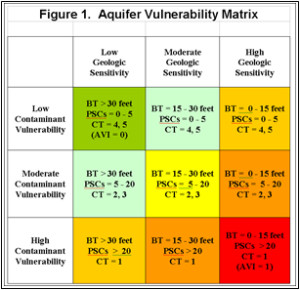Challenge
As part of its wellhead protection program, the Indiana Department of Environmental Management (IDEM) desired to evaluate the ‘aquifer vulnerability’ for wellhead areas within the state of Indiana. This desire was the result of the need to satisfy the requirements of the Source Water Assessment Plan for the State of Indiana, which set as one of its goals, the need for such an evaluation.
Action
IDEM contracted with Mundell to develop and design an aquifer vulnerability analysis protocol in order to assess the vulnerability to pollutants within the wellhead areas. Mundell developed a protocol based on information already contained in each drinking water supply’s Wellhead Protection Plans (WHPs). First, a detailed geologic and hydrogeologic evaluation (distribution and thickness of the geologic barrier above the supply well screens) was performed for each of the wellhead areas. The potential sources of contamination (PSCs) were then analyzed, both in number and type, in order to calculate an Aquifer Vulnerability Index (AVI) for each of the wellhead areas. The AVI was then evaluated using the Aquifer Vulnerability Matrix. The matrix determines drinking water system susceptibility based on the local geology and the number, proximity and types of PSCs. The system Aquifer Vulnerability was then classified as low, moderate or high based on the system’s final AVI value.
Results
Mundell subsequently determined the AVIs for over eighty (80) wellhead areas as a pilot study, and ranked each water supply according to their relative AVI values. Approximately 5 % of the wellhead areas demonstrated high aquifer vulnerability, and the rest exhibited either moderate or low aquifer vulnerability.
![]()




